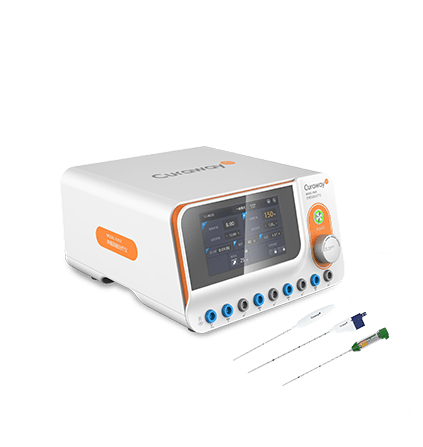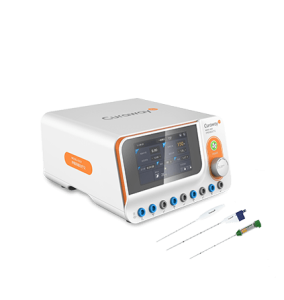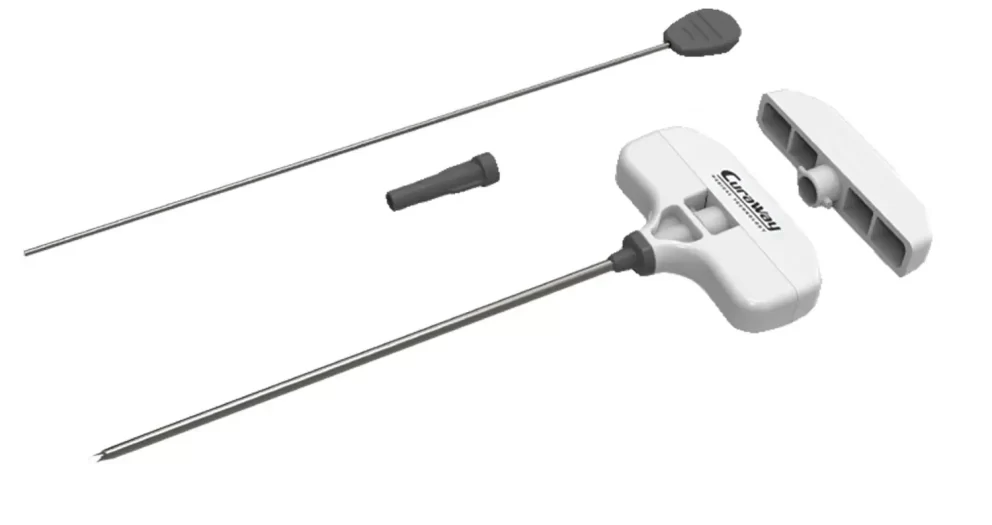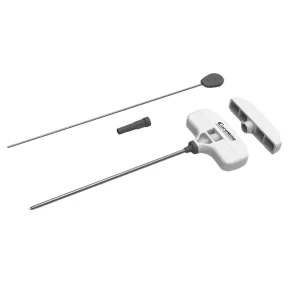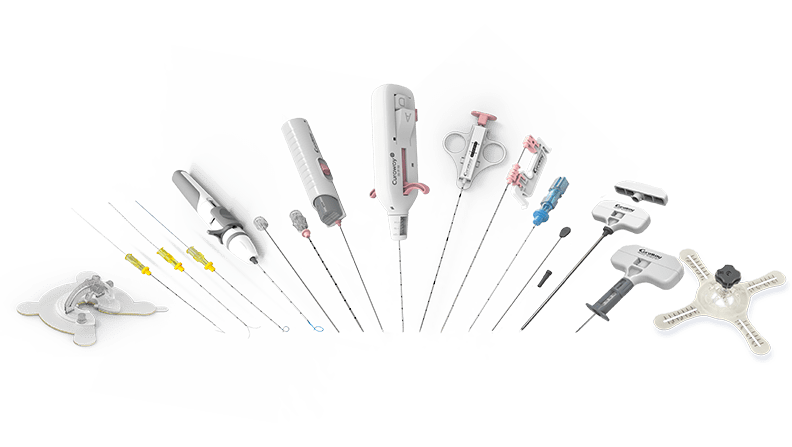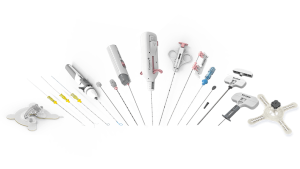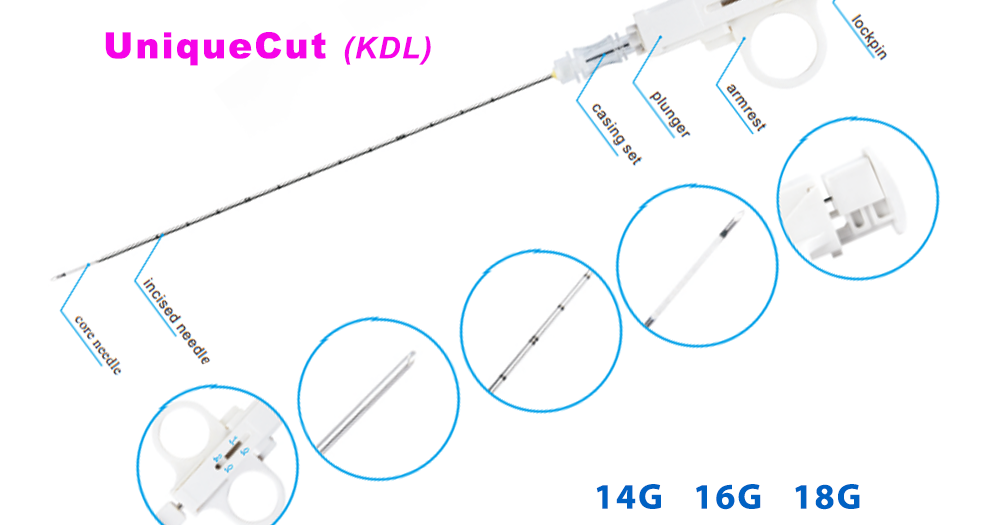Radiofrequency Ablation Machine for Pain Management
Radiofrequency Ablation Machine for Pain Management: An In-Depth Guide
Introduction
Chronic pain affects millions of individuals worldwide, often hindering daily activities and diminishing the quality of life. While medications, physical therapy, and surgery are traditional options, advanced medical technology has introduced a minimally invasive solution: Radiofrequency Ablation (RFA). This procedure involves the use of a specialized machine to deliver radiofrequency energy to targeted nerves, thereby disrupting pain signals. In this comprehensive article, we explore the intricacies of RFA machines, their applications in pain management, benefits, risks, and emerging advancements.Understanding Radiofrequency Ablation
Radiofrequency Ablation (RFA) is a medical procedure designed to reduce pain by using heat generated from radiofrequency energy. The process involves inserting a small needle-like probe into the affected area, which is guided by imaging techniques like fluoroscopy or ultrasound. Once the probe is positioned near the nerve responsible for pain, an electrical current is delivered to heat the nerve tissue, creating a lesion that disrupts pain signal transmission.Components of an RFA Machine
RFA machines are highly sophisticated medical devices comprising several critical components:- Generator Unit: The main console that generates and delivers radiofrequency energy. It allows for precise control of energy output, duration, and temperature.
- Electrodes and Probes: Specialized needles or probes that deliver radiofrequency energy to targeted tissues.
- Cooling System: Some machines feature a cooling mechanism to prevent overheating of surrounding tissues during prolonged procedures.
- Imaging Integration: Many RFA systems integrate with imaging technologies like ultrasound or fluoroscopy for accurate needle placement.
- Safety Features: Advanced safety mechanisms include impedance monitoring and automatic shutdown in case of abnormalities.
Indications for Radiofrequency Ablation
RFA is primarily employed for pain management in conditions where nerve-related pain is prevalent. Common indications include:- Chronic Back and Neck Pain: Often caused by facet joint arthritis or degenerative disc disease.
- Arthritis-Related Joint Pain: Including knee, hip, and shoulder osteoarthritis.
- Neuropathic Pain: Conditions like trigeminal neuralgia and peripheral neuropathy.
- Cancer Pain: RFA can be used as a palliative treatment to manage severe pain in cancer patients.
- Sacroiliac Joint Pain: Pain originating from the sacroiliac joint in the pelvis.
How RFA Machines Work
The procedure begins with the placement of an electrode near the target nerve. Using imaging guidance, the physician ensures precise positioning. A local anesthetic is administered to minimize discomfort during the insertion process. Once the electrode is in place, the generator unit delivers controlled radiofrequency energy to heat the nerve tissue to approximately 80-90°C for a few minutes. The heat creates a lesion, disrupting pain signal transmission without damaging the surrounding structures.Advantages of Using RFA Machines
- Minimally Invasive: Unlike traditional surgical procedures, RFA involves minimal tissue disruption.
- Effective Pain Relief: Provides long-term relief for many patients, lasting from months to years.
- Quick Recovery Time: Most patients can resume normal activities within a day or two.
- Targeted Treatment: Reduces the risk of affecting nearby nerves or tissues.
- Reduced Medication Dependence: Many patients experience significant pain relief, allowing them to reduce or eliminate pain medications.
Risks and Contraindications
While RFA is considered safe, it is not without risks. Potential complications include:- Infection: At the insertion site.
- Nerve Damage: Rare but possible if the procedure is not accurately performed.
- Temporary Pain: Some patients may experience increased pain immediately after the procedure.
- Bleeding: Minor bleeding may occur at the needle insertion site.
- Pregnancy.
- Severe bleeding disorders.
- Active infections at the treatment site.
- Allergy to local anesthetics.
Emerging Technologies in RFA Machines
The field of RFA technology continues to evolve, offering improved outcomes and enhanced safety. Innovations include:- Cool-Tip RFA: Features a cooling mechanism to expand lesion size while minimizing tissue charring.
- Pulsed Radiofrequency: Delivers energy in short bursts, reducing the risk of nerve damage.
- Wireless Systems: Eliminate cumbersome cables, improving ease of use.
- Integration with AI: Advanced systems use artificial intelligence for precise targeting and real-time monitoring.
- Portable RFA Machines: Compact designs allow for use in outpatient settings and remote locations.
Steps to Operate an RFA Machine
- Preparation: Sterilize the equipment and the patient’s treatment area.
- Positioning: Use imaging to locate the target nerve.
- Probe Placement: Insert the probe and confirm its position using imaging.
- Energy Delivery: Adjust the generator settings and deliver the radiofrequency energy.
- Monitoring: Continuously monitor impedance and temperature to ensure safety.
- Completion: Remove the probe and apply a sterile dressing to the insertion site.
Cost and Accessibility
The cost of RFA machines varies based on features, brand, and country of purchase. Basic models may cost around $10,000, while advanced systems with integrated imaging can exceed $50,000. Accessibility is improving with the introduction of portable and affordable models, making RFA a viable option in developing regions.Training and Expertise Required
Proper training is crucial for healthcare professionals operating RFA machines. This includes:- Anatomical Knowledge: Understanding nerve pathways and pain sources.
- Imaging Skills: Proficiency in using fluoroscopy or ultrasound for guidance.
- Technical Training: Familiarity with the RFA machine’s settings and safety features.
- Patient Management: Ensuring patient comfort and addressing complications.
Conclusion
Radiofrequency Ablation machines have revolutionized pain management, offering a minimally invasive, effective, and safe solution for chronic pain sufferers. As technology advances, RFA is becoming more accessible and versatile, promising better outcomes for patients worldwide. However, proper training and adherence to safety protocols remain essential to maximize the benefits and minimize risks. By providing targeted pain relief and improving quality of life, RFA machines continue to be an indispensable tool in modern medicine, bridging the gap between traditional therapies and surgical interventions.Top Reasons to Choose CuraWay for Your Radiofrequency Ablation System
CuraWay's Radiofrequency Ablation (RFA) systems are designed to offer precise and efficient tissue ablation across various medical applications. Here are key reasons to consider purchasing an RFA system from CuraWay: Advanced Technology and Features:- High Output Power: CuraWay's RFA systems, such as the CR-S2000 generator, deliver up to 250W of output power at a 480 kHz operating frequency, ensuring effective tissue coagulation. Medical Expo PDF
- Cooled Electrodes: The use of internally cooled electrodes minimizes the risk of overheating surrounding tissues, enhancing patient safety during procedures. Medical Expo PDF
- Adjustable RF Electrodes: CuraWay offers adjustable exposure lengths ranging from 5-25mm, 10-30mm, and 20-40mm, providing versatility to meet diverse clinical needs. Medical Expo PDF
- FDA Clearance: CuraWay's Endovenous Radiofrequency Generator (JM-S40) and associated catheters have received FDA 510(k) clearance, indicating compliance with stringent safety and efficacy standards. FDA Access Data
- Real-Time Monitoring: The systems feature real-time monitoring of temperature, power, and time during RF output, allowing for precise control and enhanced safety during procedures. FDA Access Data
- Specialized Systems: CuraWay provides specialized RFA systems for various medical conditions, including hemorrhoid treatment, offering minimally invasive and effective solutions. Medical Expo PDF
- Research and Development: CuraWay collaborates on innovative medical devices, such as biopsy needles with integrated bipolar RF ablation electrodes, demonstrating a commitment to advancing medical technology.
- International Reach: Based in Hangzhou, China, CuraWay serves a global market, ensuring accessibility to their products worldwide. Curaway
- Comprehensive Product Range: Beyond RFA systems, CuraWay offers a variety of interventional minimally invasive electrosurgical products, including biopsy needles and CT-guided puncture devices, catering to diverse medical needs. Facebook
CuraWay and Unique Medi Trade: Expanding Access to Advanced Medical Technologies in Bangladesh
CuraWay is a renowned global medical device company specializing in minimally invasive surgical equipment and interventional medical solutions. Based in Hangzhou, China, CuraWay offers a comprehensive range of advanced products, including radiofrequency ablation (RFA) systems, biopsy needles, and other cutting-edge medical devices. With a strong emphasis on innovation, quality, and regulatory compliance, CuraWay products are recognized worldwide for their reliability and effectiveness in diverse clinical applications. In Bangladesh, CuraWay has partnered with Unique Medi Trade, a rapidly growing medical equipment supplier. Unique Medi Trade is known for its commitment to delivering high-quality medical solutions and exceptional customer support. Headquartered in Dhaka, the company has established itself as a trusted provider of advanced medical technologies to healthcare institutions across the country.Key Benefits of the Partnership
- Access to Advanced Technology: Through its partnership with CuraWay, Unique Medi Trade ensures that healthcare providers in Bangladesh can access state-of-the-art radiofrequency ablation systems and other specialized equipment. These systems are designed to offer precision, safety, and efficiency in minimally invasive procedures, addressing a wide range of medical conditions.
- Regulatory Compliance and Quality Assurance: CuraWay products distributed by Unique Medi Trade adhere to international regulatory standards, including FDA and CE certifications. This guarantees that Bangladeshi healthcare professionals are using safe and effective tools in their clinical practices.
- Local Expertise and Support: Unique Medi Trade provides localized support for CuraWay products, offering training, maintenance, and customer service. Their dedicated team ensures that healthcare facilities have the necessary knowledge and resources to utilize the devices effectively.
- Expanding Healthcare Capabilities in Bangladesh: This collaboration reflects a shared commitment to improving healthcare infrastructure and patient outcomes in Bangladesh. By introducing advanced medical technologies, CuraWay and Unique Medi Trade are empowering healthcare providers to deliver high-quality care.
Conclusion
The partnership between CuraWay and Unique Medi Trade exemplifies a successful collaboration aimed at advancing medical care in Bangladesh. By combining CuraWay's innovative solutions with Unique Medi Trade's local expertise, the two companies are helping to transform the healthcare landscape in the region, providing clinicians with the tools they need to offer better outcomes for patients. Contact
Contact
Unique Medi Trade



